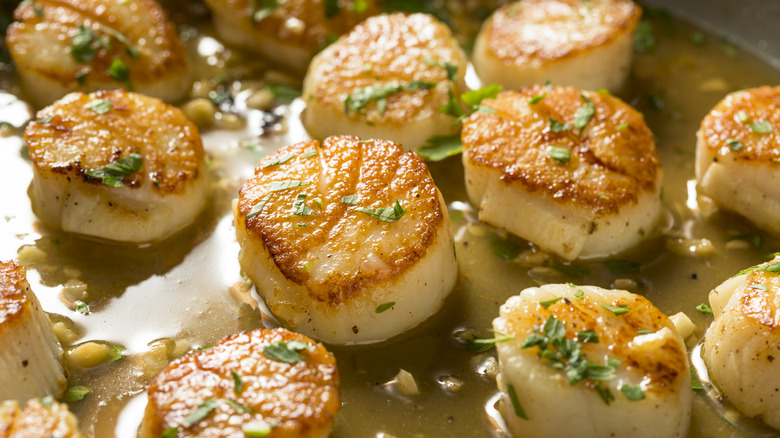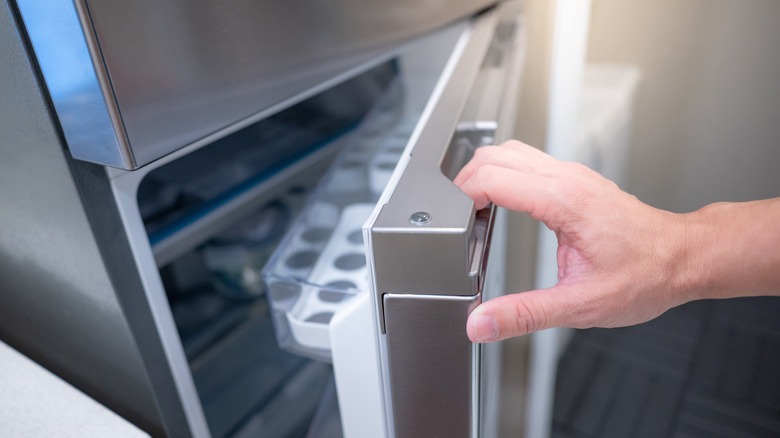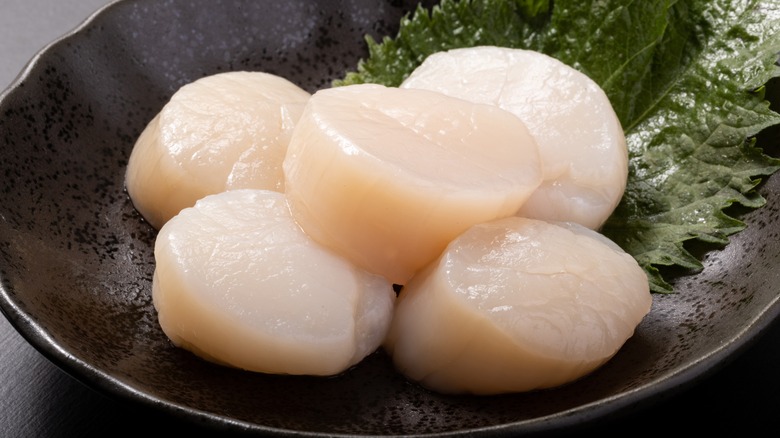How To Reheat Scallops For The Best Taste And Texture
Texture is a crucial element to get right when cooking scallops, as their delicate nature demands careful handling to achieve the perfect balance. The goal is to achieve a tender and buttery consistency and avoid any overcooking that may lead to a rubbery or tough finish. This makes reheating scallops an interesting endeavor since applying heat to the already-cooked bivalves increases the likelihood of overdoing them. The best method is to use a gentle heat to warm them without compromising their tenderness.
You have a few options at your disposal for reheating scallops while preserving both taste and texture. A quick sauté in butter or olive oil over medium heat will ensure they're nice and warm without becoming tough. Alternatively, placing them in a preheated oven at a low temperature allows for a more gradual reheating process. You can, of course, go the microwave route, but be sure to keep a watchful eye since this method can quickly zap the scallops of their moisture. Wrapping them in a damp paper towel first will help avoid this.
Speaking of moisture, steaming is also a great way to reheat scallops because it helps prevent them from drying out. Simply place a steaming basket or colander over an inch or two of boiling water, add scallops, and cover for a few minutes to revive. A quick sear on the grill with a squeeze of lemon can also breathe new life into last night's leftovers.
How long scallops last in the fridge
We've covered how best to reheat scallops. But first, you must be clear on how long they can last in the refrigerator in the first place. Maybe you ordered the seared scallops at a fancy restaurant over the weekend, or perhaps you decided to whip up a seafood pasta with sea scallops at home. Either way, seafood is always tricky to figure out when it comes to how long certain types last in the fridge after being cooked.
Cooked scallops and other fish can last up to three or four days in the refrigerator before bacterial growth starts to accumulate, according to the US Department of Agriculture. Meanwhile, the department says raw seafood, including scallops, can last one to two days before it needs to be cooked or frozen. You'll want to make sure to cook or reheat and reuse your scallops before then to avoid any foodborne illness.
Why cook scallops at all?
Ask any sushi lover about the pleasures — and benefits — of consuming raw fish. From salmon and tuna to yellowjack and seabass, raw fish is a staple on any sushi menu. But you don't often think of scallops in the same vein. This begs the question: Do you have to cook scallops?
Consuming raw scallops is actually quite common and embraced by many seafood enthusiasts. It's known as "scallop crudo," and the appeal lies in the delicate, sweet flavor of fresh, high-quality scallops. Chefs often prepare them thinly sliced and paired with complementary flavors, such as citrus, herbs, or a light vinaigrette.
However, enjoying raw scallops requires careful sourcing from reputable suppliers to ensure freshness and safety. To minimize the risk of foodborne illnesses, be on the lookout for a sushi- or sashimi-grade label, which means the item is deemed safe for raw consumption. It's generally recommended to only order raw scallops at a specialty restaurant rather than prepare them at home.


